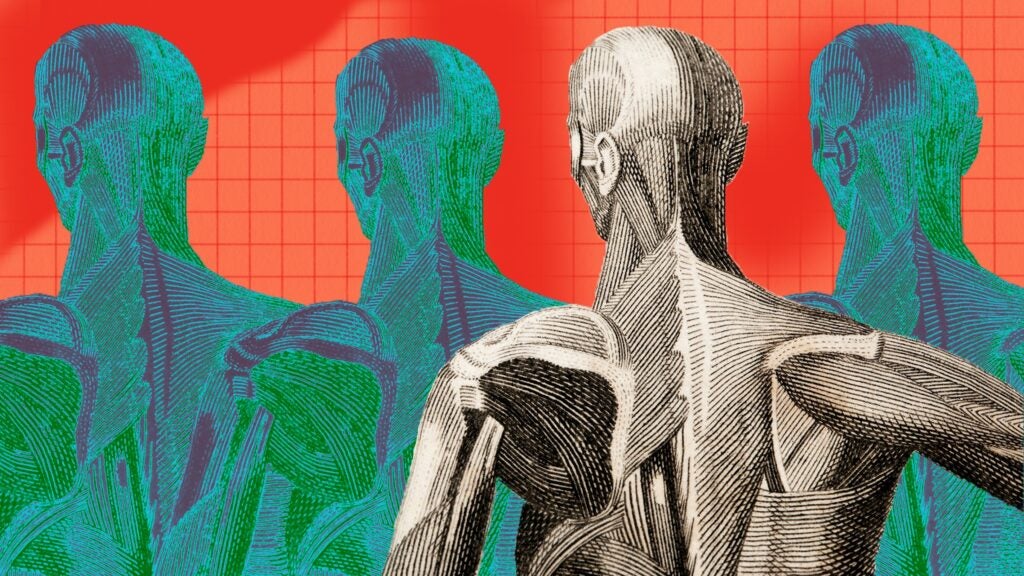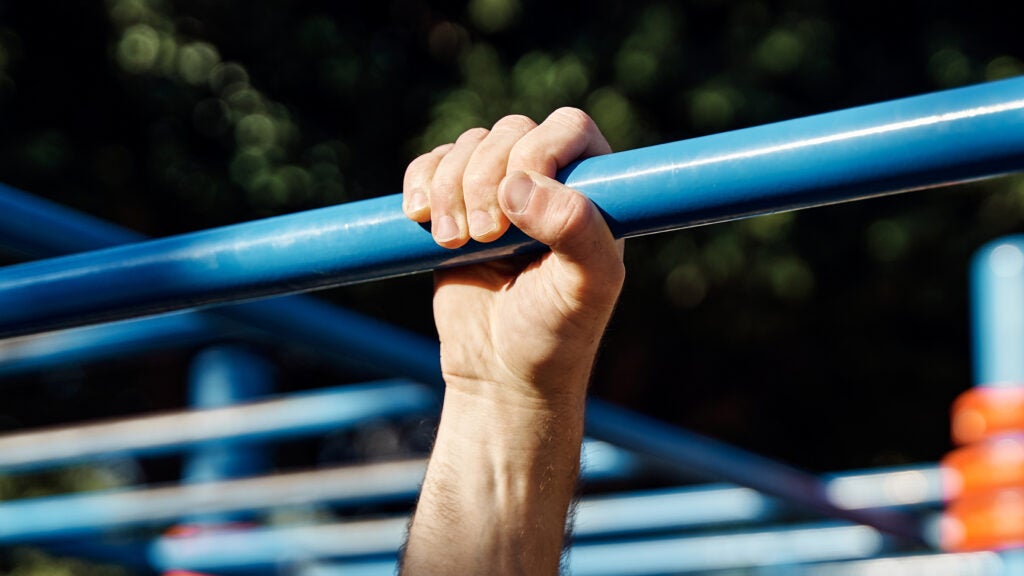Everyone is familiar, at least hand-wavingly, with the distinction between slow-twitch and fast-twitch muscle-fiber types. The former are great for running marathons; the latter are ideal for sprinting 100 meters. But how do we know in practice which kind of muscle fibers we have and what we should do with them?
A new paper in the International Journal of Sports Physiology and Performance, from a research team led by Eline Lievens of Ghent University in Belgium, poses these questions to more than 400 elite coaches and sports scientists across a wide variety of sports. Ninety percent of them believe that knowing the dominant muscle-fiber type of an athlete is useful for optimizing training and performance—but only half of them claim to actually know which of their athletes are slow-twitch or fast-twitch. A growing body of research suggests that this is a problem, or at least a missed opportunity.
On average, humans have a roughly 50-50 mix of slow- and fast-twitch fibers. But there’s huge variation around this average: some people are mostly slow-twitch, others are mostly fast-twitch. In recent years, there’s been growing evidence that it’s possible to shift your fiber ratio to some extent—mostly notably a surprising case study of a pair of identical twins where one was a lifelong triathlete who ended up with 94 percent slow-twitch fibers and the other was sedentary with just 40 percent slow-twitch. But that’s an extreme example, and for most people fiber type remains relatively stable throughout their lives.
Why Muscle-Fiber Type Matters for Endurance
Back in 2020, I wrote about a fascinating study that took highly-trained runners and basically asked them to overtrain for three weeks by increasing their mileage by up to 30 percent. Half of the runners couldn’t handle the training and got worse; the other half were fine. The best predictor of these groups was muscle-fiber type: slow-twitchers could handle the extra mileage, fast-twitchers couldn’t recover quickly enough and got overtrained.
Other studies have found that fast-twitchers have a faster last-lap sprint while slow-twitchers do better in more evenly paced races.
And a study published this month by a group led by Wannes Swinnen of KU Leuven in Belgium found that slow-twitchers tend to realize better running economy, meaning that they burn less energy to sustain a given pace. This makes sense, because one of the hallmarks of slow-twitch fibers is that they’re less energy-hungry than fast-twitch fibers. But the size of the effect on running economy, a 7.8 percent difference, is remarkable. For context, the 4 percent gain in running economy offered by first generation supershoes upended the sport.
Why Muscle-Fiber Type Matters for Strength
You might think it’s obvious that fast-twitchers have big muscles and slow-twitchers have smaller muscles. Consider, say, the typical body types of a 100-meter sprinter and a marathoner. But that’s mixing up different causes and effects. Extra muscle is helpful for sprinting, and a hindrance for running long distances, so it’s natural that elite sprinters work to get bigger muscles. But in a study I wrote about last year, when fast-twitchers and slow-twitchers were given the same training plan, they gained the same amount of muscle. Big muscles don’t have to be fast-twitch.
Fiber type matters in other ways, though. Another recent study found that fast-twitchers tend to be very slightly stronger: fiber type explained about five percent of the variance in one-rep max. But at a given submaximal load, like 80 percent of one-rep max, they’re able to do fewer reps before reaching failure. Again, this makes sense: fast-twitch fibers are more powerful but fatigue more quickly.
This has a couple of important implications for strength training. One is that the prediction equations used to estimate one-rep max, which are usually based on how many reps you can do at a lower weight, should be different for fast-twitch and slow-twitch athletes. The other is that a workout like “12 reps at 60 percent of one-rep max” is a completely different stimulus for athletes with different fiber types. In general, slow-twitchers need to do more reps to get a comparable stimulus.
So Which Muscle-Fiber Type Are You?
This is where things get complicated. The gold standard for fiber typing is a muscle biopsy, which involves slicing out a small piece of muscle for analysis. Nobody is a big fan of this approach, both because it really hurts and also because no one likes giving away pieces of hard-earned muscle.
The reason there has been a huge resurgence of research on this topic recently (and why much of this research is coming out of Belgium) is that back in 2011 Belgian researchers developed a non-invasive method of estimating where you sit on the fast/slow continuum. It involves using proton magnetic resonant spectroscopy, a version of MRI scanning, to measure levels of carnosine, a molecule that’s roughly twice as abundant in fast-twitch fibers compared to slow-twitch ones. This is a much more palatable technique for researchers to use, but it’s still not easily accessible to coaches and athletes.
This is why half the coaches in Lievens’s survey said they didn’t know their athletes’ fiber type. If you coach elite marathoners or sprinters, you can probably make a pretty good guess. But if you coach middle-distance runners or team-sport athletes like soccer players, or if you’re a recreational athlete whose body wasn’t necessarily “born” for the sport you’ve chosen, then it’s much harder to know where you sit. Most of us, of course, fall somewhere in the middle—but we may still lean in one direction or the other.
In Lievens’s study, the objective measure coaches relied most heavily on was a jump test. How high you can jump (or, equivalently, how long you can stay in the air) turns out to be a decent proxy for fast-twitch content. According to one rule-of-thumb, men with a vertical greater than 20 inches and women with a vertical greater than 14 inches are likely to be predominantly fast-twitch.
Another approach is to see how many reps you can do at a given load: one study found that fast-twitchers could typically do 5 to 8 back squats at 80 percent of max, while slow-twitchers could do 11 to 15. Roughly a third of the group did 9 or 10 reps, and they tended to have an even mix of fast- and slow-twitch fibers.
For now, none of these methods is easy to implement. Instead, the best estimate may be how you perform over short versus long distances. This is an imperfect proxy, since it will also be affected by factors like how you’ve trained. But as these fiber-type studies continue to pile up, it’s becoming increasingly clear that this is a parameter that’s worth considering when you’re making decisions about how much mileage to run or how many reps to lift. Fiber type isn’t destiny, and it doesn’t have to determine your athletic goals—but it might tell you something useful about the best way to get there.
For more Sweat Science, join me on Threads and Facebook, sign up for the email newsletter, and check out my forthcoming book The Explorer’s Gene: Why We Seek Big Challenges, New Flavors, and the Blank Spots on the Map.
Source link










